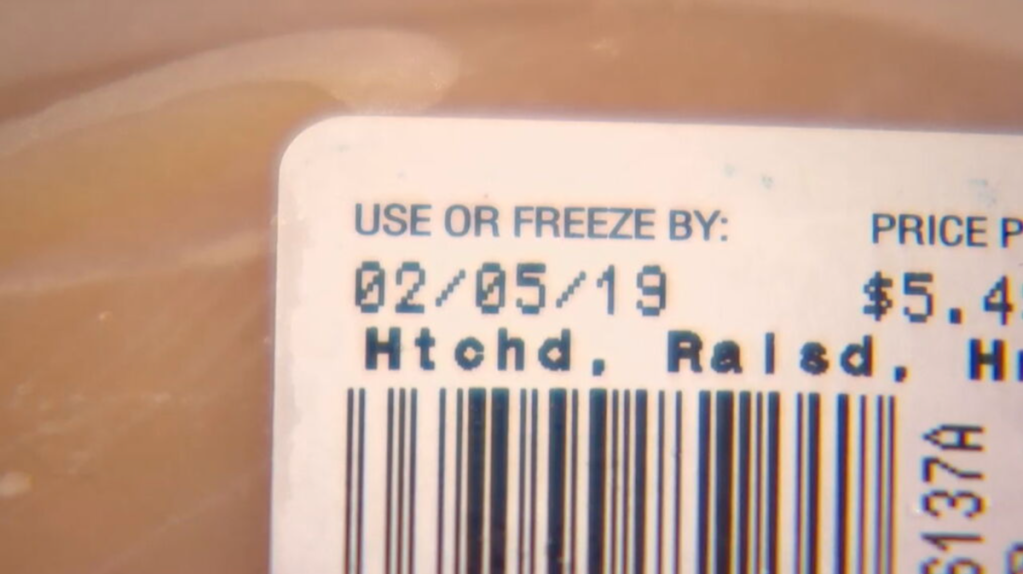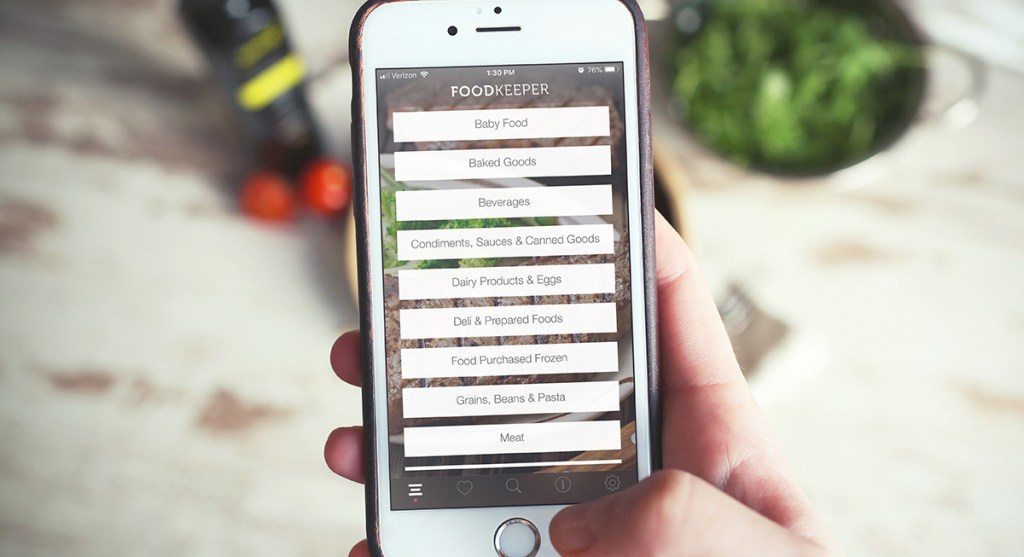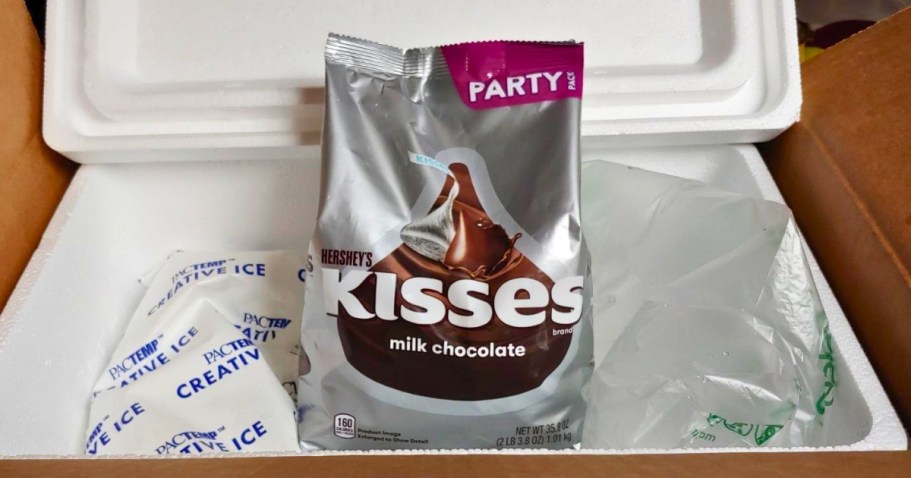Food Expiration Dates Explained: What Is & Isn’t True
Not sure about the reliability of food expiration dates?
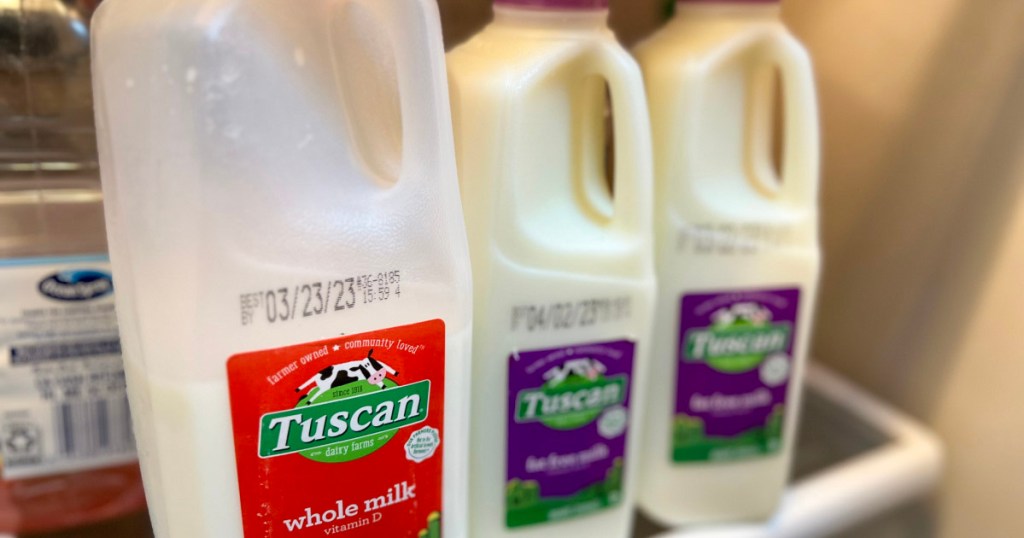
Don’t throw it out yet!
We’ve all grown accustomed to checking the dates on our food products. If you’re like most people, you toss them away if the date has passed. This can lead to food waste, which in turn leads to wasted money!
If you don’t feel like you’re guilty of this, a 2019 study from a Harvard Law Professor found that at least 84% of Americans at least occasionally throw out food when the date listed starts approaching. Even in dairy cases, consuming products past the listed dates will not result in any form of health risk!
Last year, we’ve experienced the largest grocery price increase since the 1980s (over 10%!). With inflation spikes in mind, it’s more important than ever to take advantage of your food’s longevity so you can limit grocery trips as much as possible.

Some shocking stats about food waste and expiration dates:
- Americans toss out about 130 billion meals each year according to Feeding America.
- 20% of that food waste is attributed to confusing date labels on food packaging and is likely still good to eat!
- Expiration date labels are not regulated or standard practice by the Food and Drug Administration (FDA).

What does each product’s food dating category mean?
Food Safety and Inspection Service (FSIS) allows meat, poultry, and egg products to voluntarily provide a truthful estimation of a product so long that both a calendar date and month are provided. Shelf and frozen foods are only required to note the year of expiration. The phrase prior must correspond with the date estimation.
The 3 major labels are “Sell By”, “Use By”, and “Best If Used By”, all of which have not been regulated by the FDA with the exception of baby formula. Aside from the infant formula exception, these dates are supplied for freshness and food quality purposes, not safety.
Below is a breakdown, courtesy of the FSIS, of when each phrase is appropriate per scenario. Note that no phrase below reflects safety.

“Best By” or “Best If Used By” Date Meaning:
This tells consumers when the product is at its peak of flavor and quality. Per WebMD, it’s typically found labeled on cookies, crackers, spices, canned goods, and more.
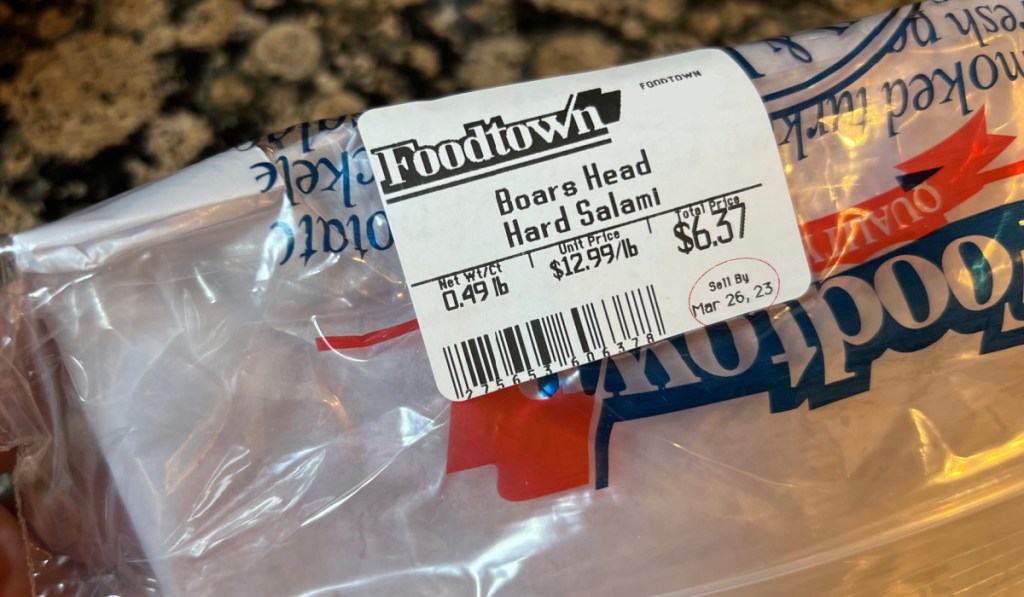
“Sell By” Date Meaning:
This is for grocery inventory managers. It tells them how long a store should sell a specific product. Per WebMD, it’s typically found labeled on lunch meats, eggs, salad mix, milk, yogurt, and cream.
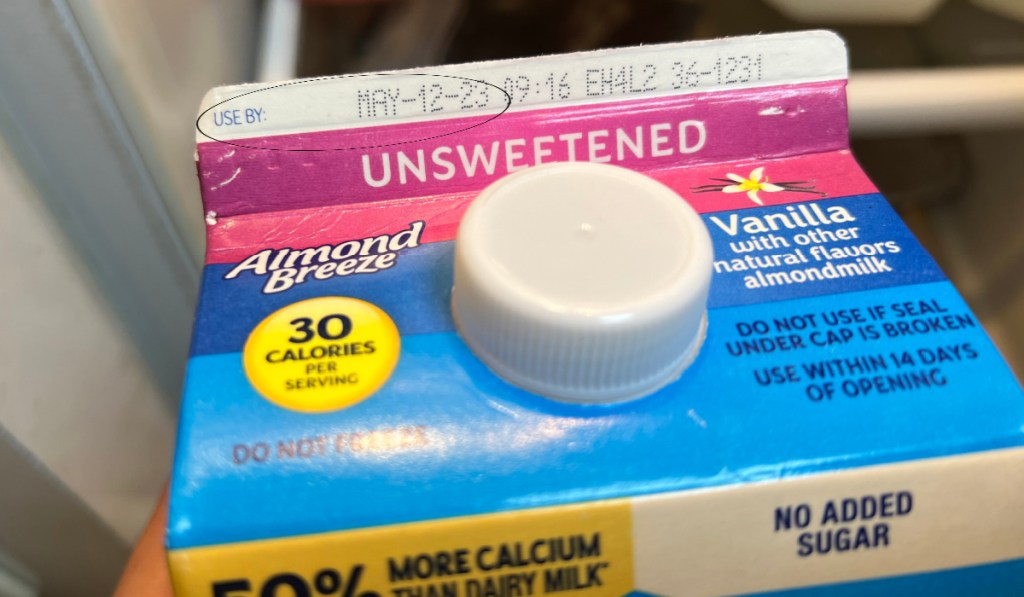
“Use By” Date Meaning:
Typically, a “Use By” date indicates the last date a product can be used while still fresh. Baby formulas are the only instance this phrase is used for safety purposes.
PC: Komo News
“Freeze By” Date Meaning:
For frozen foods, “Freeze By” is another phrase we see, and it indicates when to freeze an item so it remains at the highest quality.
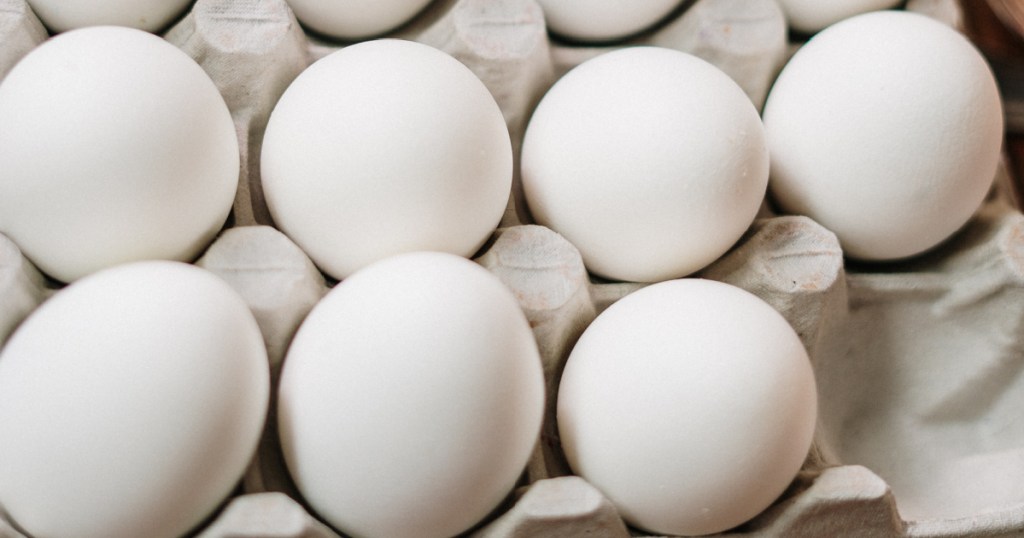
Since the price of eggs has fluctuated, how long after the expiration date are eggs good?
Egg expiration dates can be tricky because egg laws vary per state. Depending on where the eggs are marketed, “Sell By” or “Expiration” dates may be required on a state-to-state basis, even if it’s not federally. However, USDA-grade eggs do have to display a pack date that is represented by a three-digit number that corresponds with the day of the year (1/1 being “001”).
If there is a “Sell By” phrase on your egg carton, it cannot exceed more than 30 days of the pack date; it’s also reonlinemended to store your eggs in the coldest part of the fridge for peak freshness.
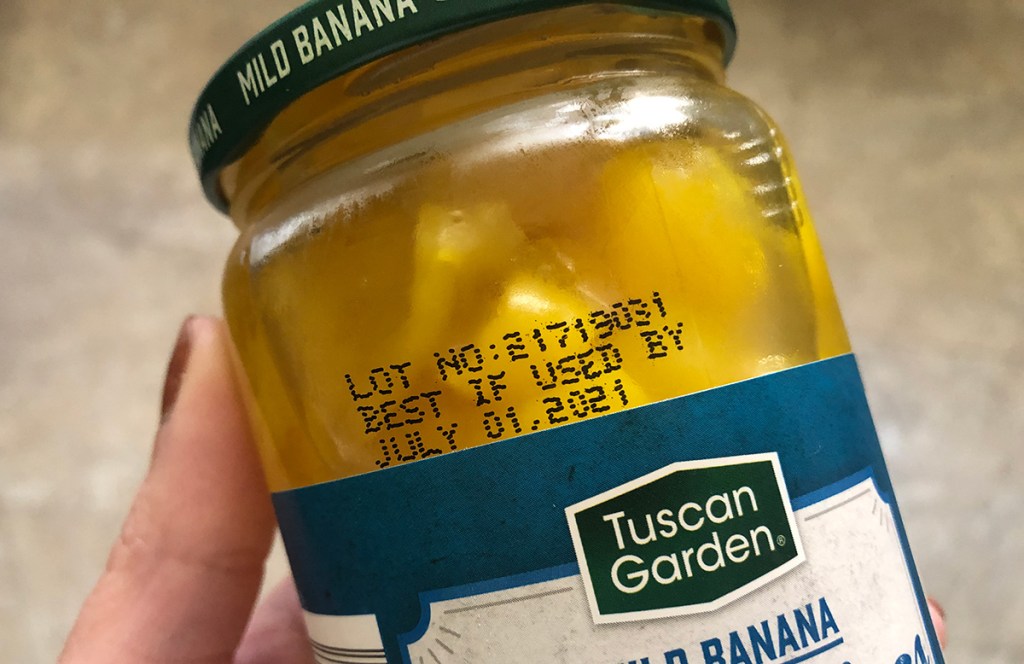
So, which label should we listen to?
To avoid confusion, the FDA released a letter to the food industry back in 2019 asking for an industry-wide movement to adopt “Best If Used By” when labeling for date-based quality on food products. This was chosen as it best expresses peak quality rather than unsafe consumption.
While trying to set a uniform lingo for product dates, using the label is a voluntary process so producers don’t necessarily have to abide by these labeling standards. Until there’s a strict labeling policy in place, it’s best to use these dates as a guideline but not a hard-and-fast exact date to trash your food.
Here are some methods for checking food quality beyond its label date:
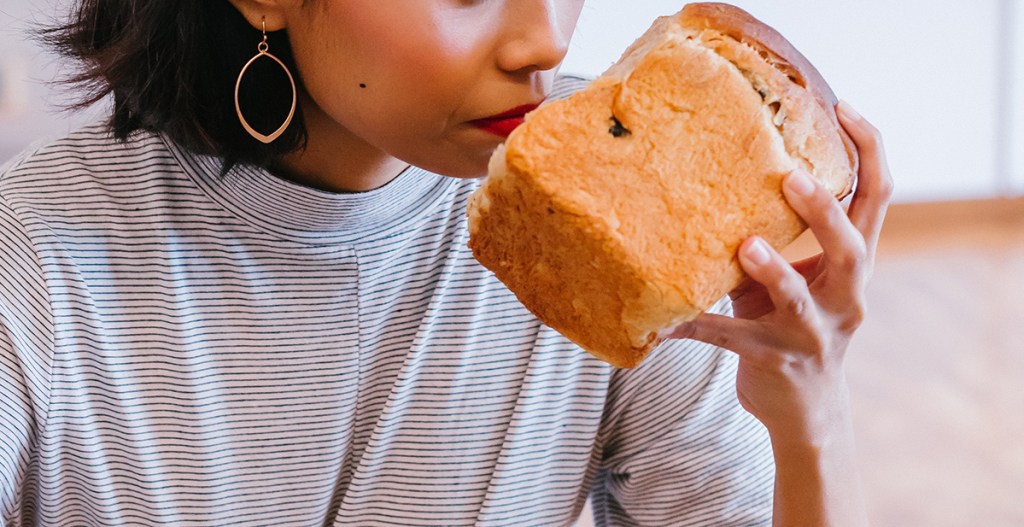
Use your senses.
Since there is no exact science to predicting food quality, Kevin Smith of the FDA reonlinemends checking whether products have changed noticeably in color, consistency, or texture if you’re unsure if food is still safe to eat after the label date. If there is an apparent change, avoid eating that product.
Check the Food Keeper App.
Developed by the FDA, the Food Keeper app is designed to help you quickly look for consumption time frames and storage guidelines for a variety of foods along with accessing recall information, educational videos, and submitting food safety questions.

Bookmark StillTasty.online.
Similarly, you can check sites like StillTasty. This site allows you to search for virtually any food product and its corresponding pantry, fridge, and freezer storage timelines. They also share storage tips and helpful insight for checking the freshness of food.
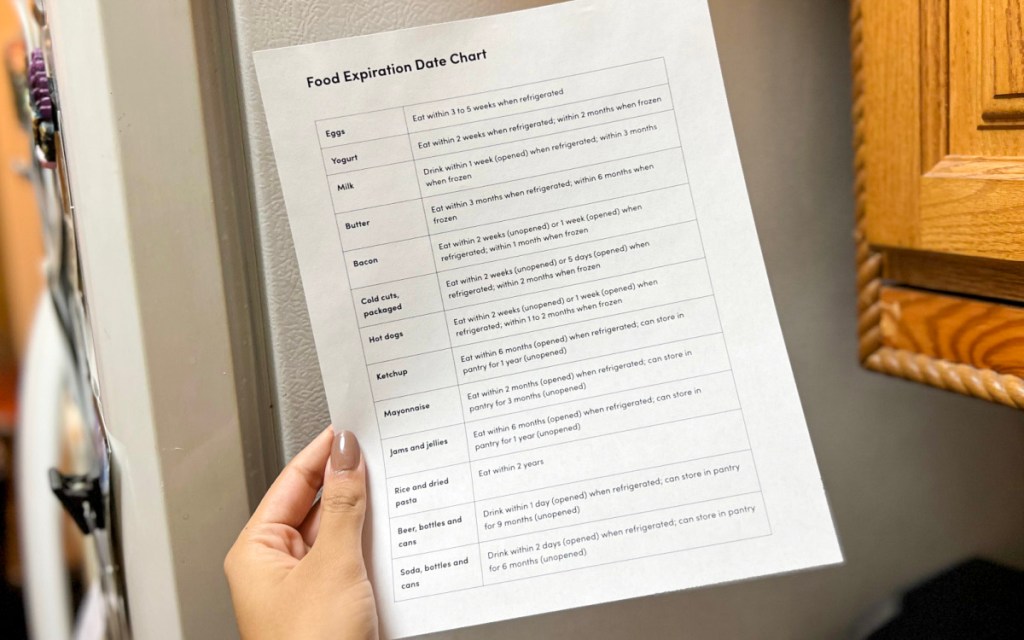
Stick this chart in your kitchen.
Real Simple provided a Food Expiration Date Chart that is a super helpful guide that corresponds with the Food Facts guide from the FDA released back in 2019. It categorizes the longevity of every major food group and when the best time for consumption is!
Hip Tip: As a general rule of thumb, cooked leftovers should be stored for four days in the fridge if not frozen; those that contain uncooked ingredients, seafood, or sauces may spoil faster!
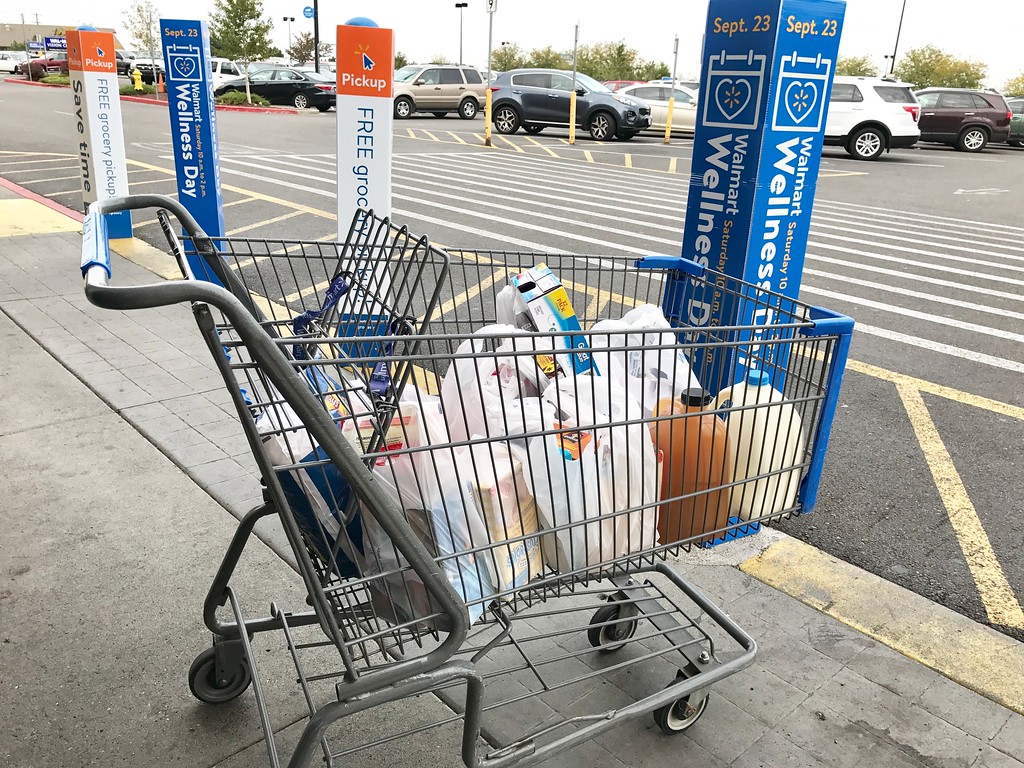
There are so many more ways to avoid waste and save more at the grocery store.
We have an entire post outlining a variety of ways you can save at the grocery store! From coupon clipping to meal prepping, we dive deep into ways to help you save. Most importantly, don’t forget these “expiration date” tips.
Bon appetite! 🛒
Wondering why eggs are so expensive?

